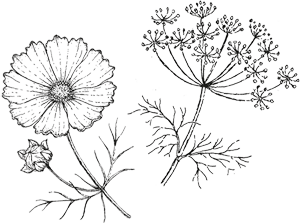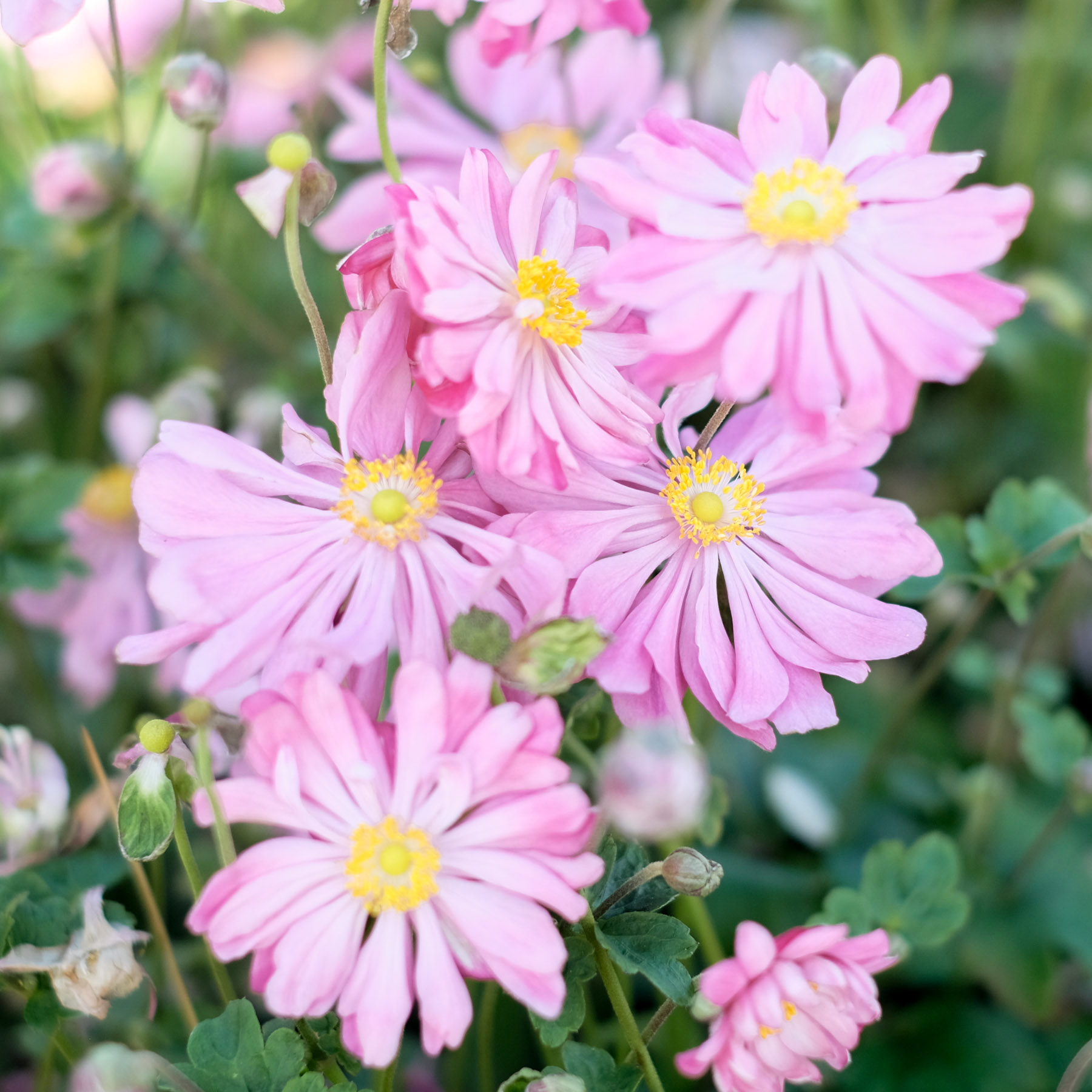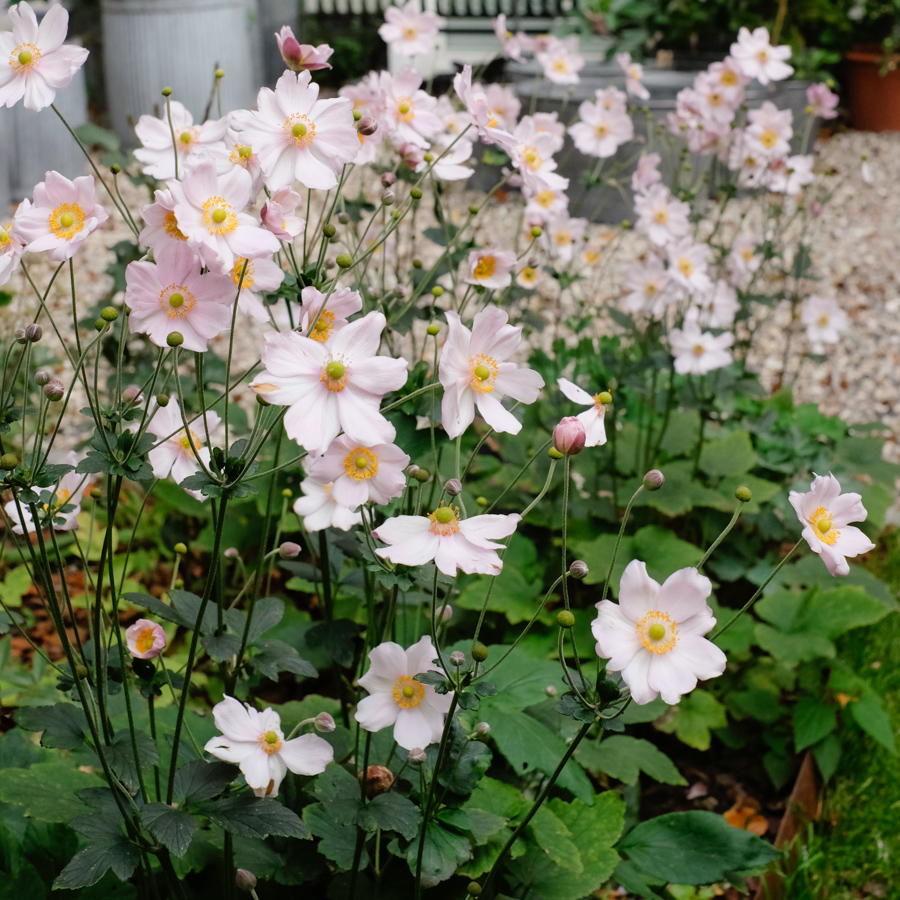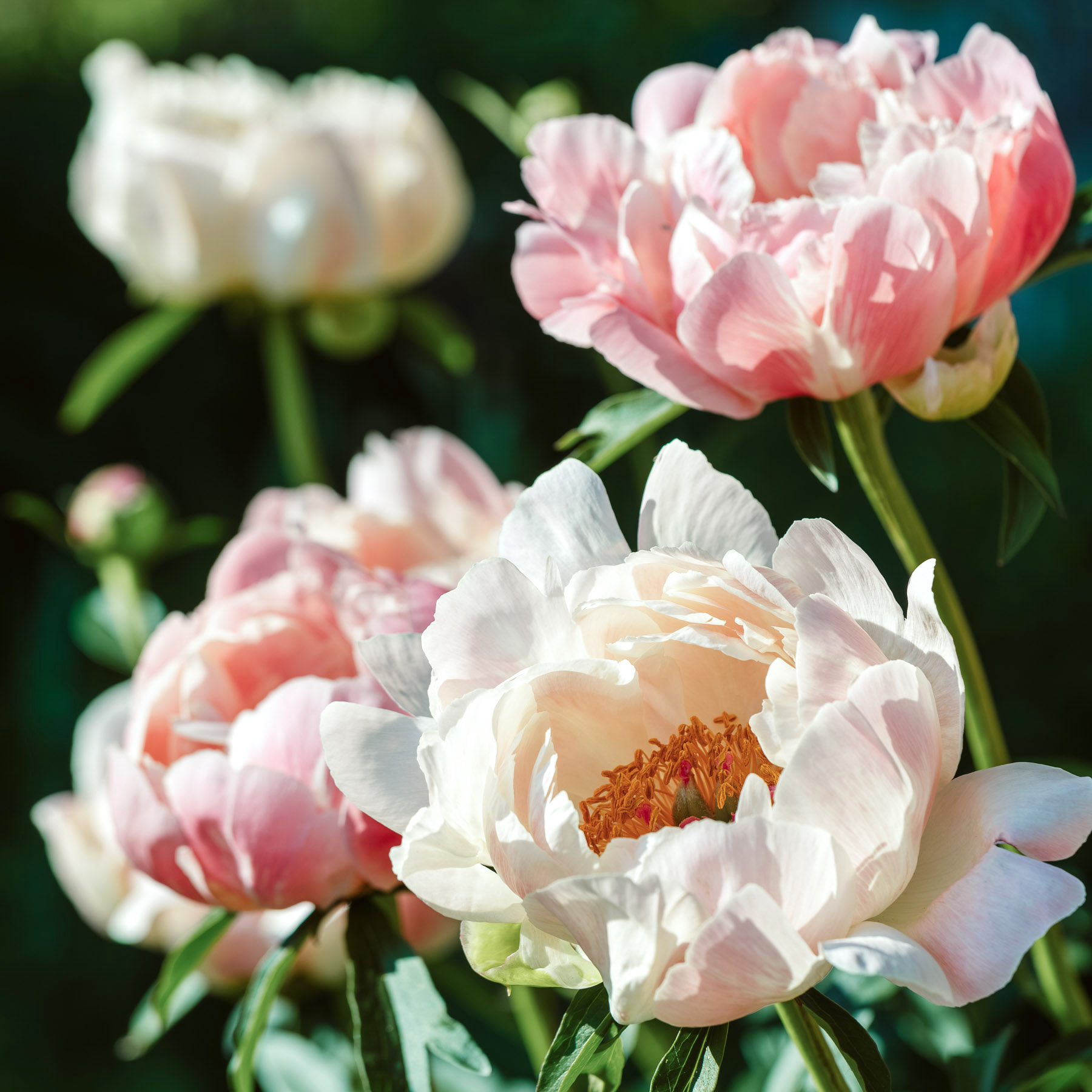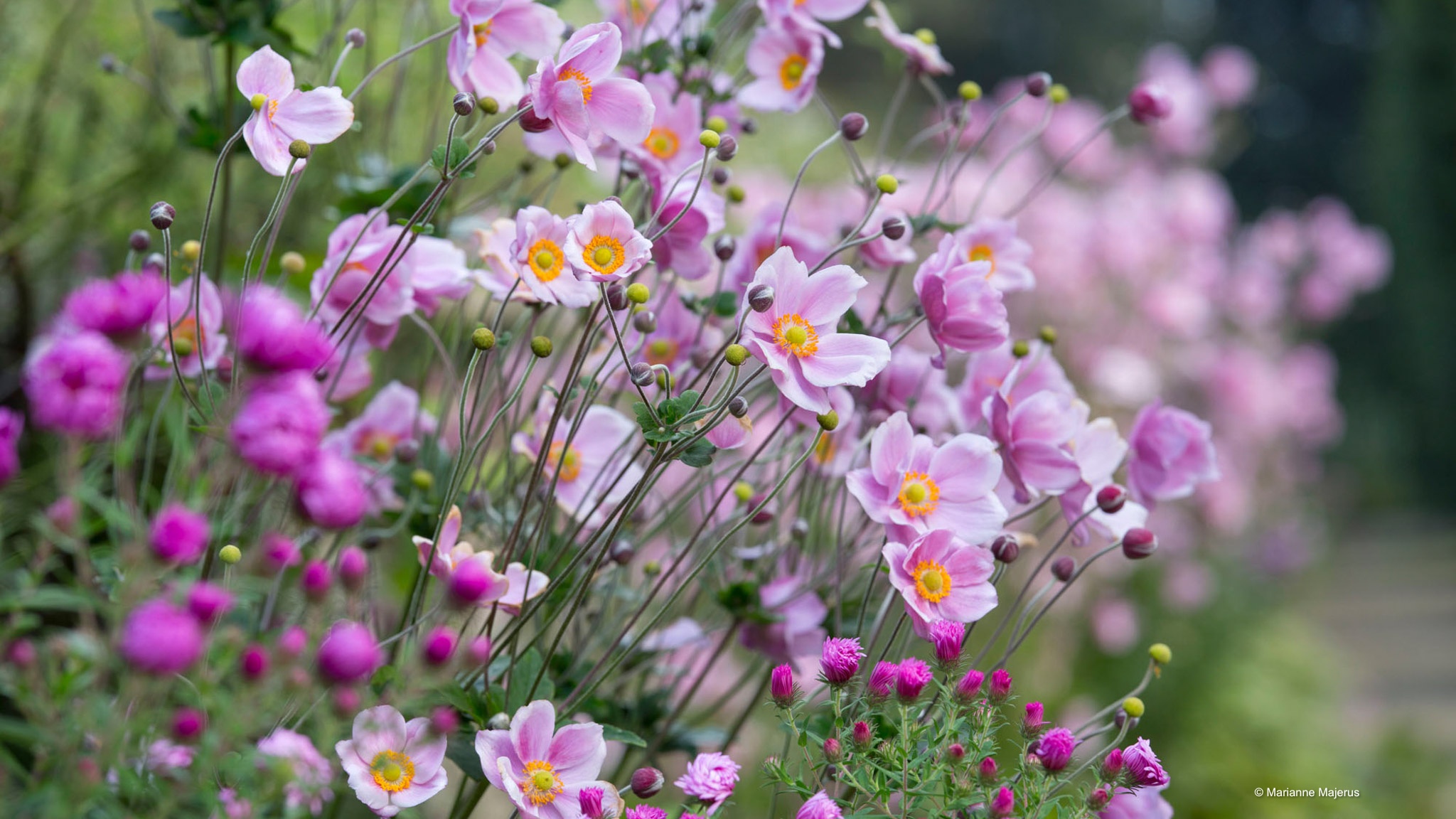
Planting, caring for and harvesting Autumn Anemones
Your guide to the glowing autumn perennials!
Autumn anemones create a magical atmosphere with their delicate appearance and romantic colours. They are an absolute enrichment and should definitely not be missing in any garden! With their numerous flowers, which shine in soft shades of white, purple and pink, they conjure up an unmistakable mood in the autumnal garden landscape. They bloom when many other plants have already lost their colours, and do so for months! What’s more, there are almost no easy-care perennials – once planted, they become more beautiful from year to year! Be inspired by the enchanting grace of autumn anemones and transform your garden into a blooming autumn paradise!
The beste time to plant autumn anemones
The best time to plant autumn anemones is in spring or early summer, ideally between April and June. This allows the plants to establish themselves in the bed before winter and develop strong roots. The soil temperature should be warm enough at this time so that the plants can grow quickly.
Alternatively, autumn anemones can also be planted in early autumn. During this period, the plants still have enough time to acclimatise and gain a foothold before winter. It is important to ensure that the soil is well-drained and not too dry. For more difficult soils, I recommend the “Robustissima” variety, which I can even grow in the shade under tall copper beeches.
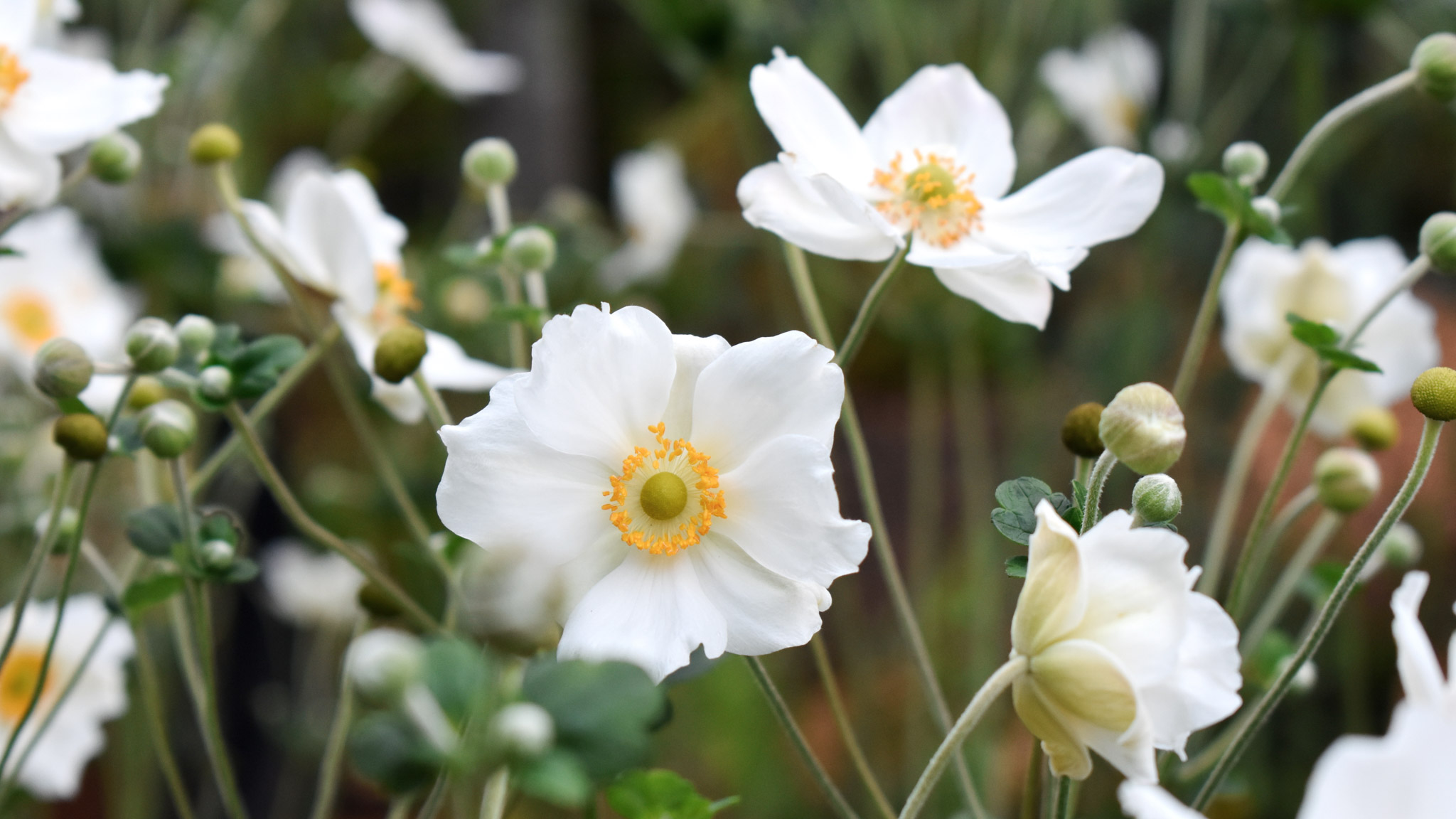
Planting autumn anemones
Autumn anemones prefer a semi-shady location. For planting, you should first loosen the soil and thoroughly remove the weeds in the desired spot. The hole should be about twice the size of the anemone’s root ball. Carefully place the plant in the hole, making sure that the uppermost roots are just below the surface of the soil.
Fill the hole with soil and press it down gently. Leave a space of around 30 to 60 cm between the plants to allow sufficient room for growth. Water the soil well without drowning it. If you don’t have a large garden but only a balcony or patio, the “Little Princess” variety is perfect for you. It is ideal for planting in containers.
Caring for and harvesting autumn anemones
In order for the autumn anemones to develop in all their splendour, you should keep the soil evenly moist at the beginning, especially during dry periods in summer. Later on, most varieties also tolerate drought well. Make sure that there is no waterlogging, as this can damage the roots. Once a year in spring, you can work in an organic fertiliser such as horn meal. This promotes growth and flower formation.
After flowering, you should leave the dead flower stalks standing and only cut them back in early spring. In cold regions, it is advisable to lightly cover the plants in winter to protect them from frost. A layer of leaves or brushwood provides good natural protection.
If the soil is particularly good, autumn anemones tend to grow very large over the years. If this is the case and is considered a nuisance, the autumn anemone can be dug up and divided in spring. This also stimulates the abundance of flowers.
Autumn anemones also make excellent cut flowers for bouquets. It is best to cut them in the early morning when the temperatures are still cool. Take sharp, clean scissors and cut the stems at an oblique angle. Fill your vase with fresh water and make sure that no leaves are submerged in the water to prevent rotting. Autumn anemones last particularly long in the vase in a cool place out of direct sunlight.

Combining autumn anemones
Autumn anemones can be wonderfully combined with other plants to create a harmonious and colourful autumn landscape. They go particularly well with perennials such as phlox, Patagonian verbena or asters, which also bloom in late summer and autumn and complement the colour palette. Filigree grasses such as lamp grass or feather grass also create beautiful accents and provide an elegant texture in the bed. It is important to place the plants in groups of at least 3-5 so that they develop their full effect and to ensure a balanced mix of flowering time, colours and textures. This will create a vibrant bed that shows autumn in all its beauty!
Newsletter
Jetzt anmelden und über 200 Planungskarten für deine Beetgestaltung downloaden!

Erhalte regelmäßig hilfreich Gartentipps, besondere Vergünstigungen und werde immer als Erste benachrichtigt, wenn unsere Blumen in der Saison online gehen! Außerdem bekommst du zusätzlich unsere digitalen Planungskarten. Du kannst sie ausdrucken und damit kinderleicht dauerblühende, pflegeleichte Beete planen! Bitte prüfe nach der Anmeldung auch deinen Spam-Ordner für den Bestätigung-Link.
